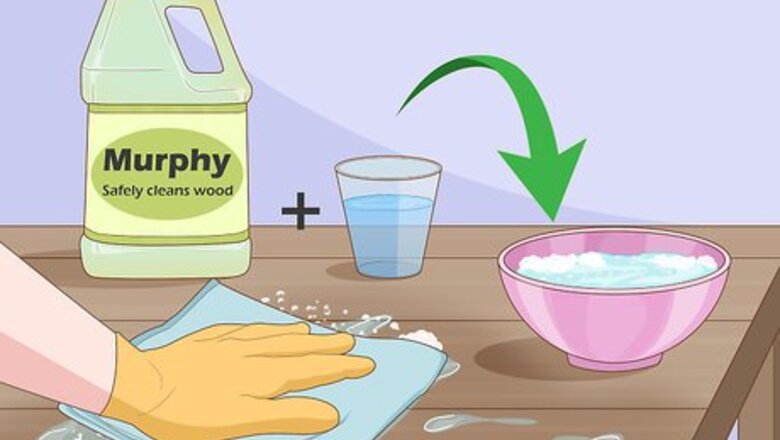
views
Rejuvenating Old Wooden Furniture
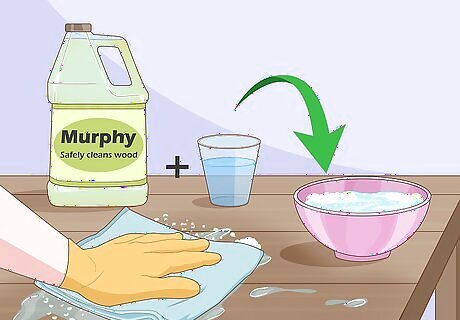
Wash the surface of the furniture with a wood-cleaning soap solution. Get a wood-cleaning soap, such as Murphy’s oil soap, and follow the instructions to mix it with water. Dip a clean cloth in the solution, wring out the excess water so it isn’t dripping, and wipe down the whole piece of furniture to clean it. This is the safest way to clean furniture when you just want to rejuvenate it and keep the old finish. Other chemical solutions can damage the finish. You should be able to find wood soap at home improvement or furniture stores. If you can’t, then you can make a safe solution with 1 US tbsp (15 ml) of mild dish soap and 1 gallon (3.78 L) of water. Wet a cloth in the solution, wipe off dirt and grime from the furniture, then dry it off with a clean towel.
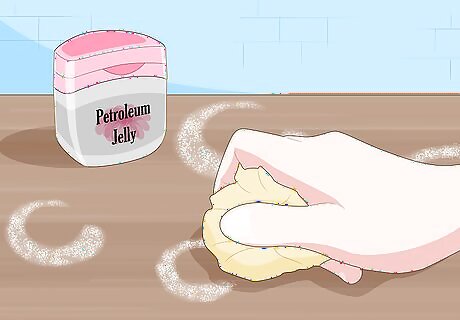
Use petroleum jelly to fix white rings from liquids on the finish. Rub petroleum jelly into the white rings and watermark spots left by glasses or spilled liquids over the years. Let it sit overnight so it will soak into the finish to remove or hide the watermarks, then wipe it off with a rag or paper towels. If the petroleum jelly doesn’t work, you can try some specialty products designed for removing rings. Make sure to test them on a small spot first because they can change the color of the finish.
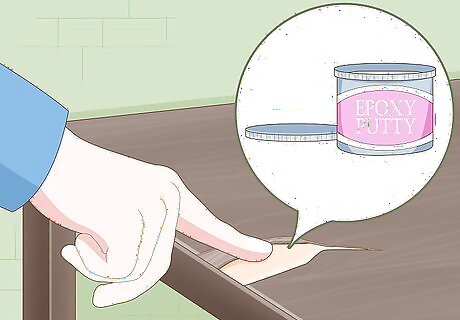
Repair any small chips or cracks with epoxy putty or wax. Choose an epoxy putty or furniture wax repair stick that closely matches the color of the wood’s finish. Break off a chunk of the putty or wax and shape it with your fingers to fit in the chips and cracks. Do your best to make the putty or wax flush with the surface of the furniture. You can get both epoxy putty and furniture repair wax sticks at home centers and furniture stores. Wax works best for smaller damages, while epoxy can fill bigger spaces. Note that the epoxy putty will require you to mix 2 parts together. Follow the instructions on the putty packaging to mix the parts together. Don’t worry if the color doesn’t match the finish exactly. You can cover it up with a wipe-on stain and finish later to make your repairs even less visible.
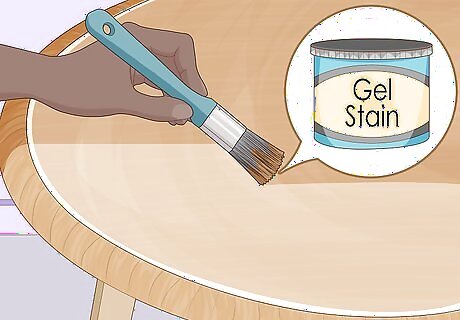
Apply a gel stain over the old finish to restore missing color. Use a soft cloth to work gel stain into the furniture if the old stain has worn off or faded. Wipe off the excess stain with a clean cloth and let it dry overnight. You don’t need to strip off the old finish to restore the color of the furniture with gel stain. Another benefit of gel stain is that it doesn’t dry super fast. If you don’t like how it looks, you can remove it with mineral spirits and try a different color.
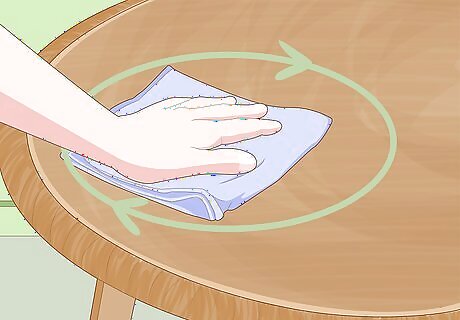
Wipe on a wood finish to restore the shine and add a protective finish. Apply a wipe-on wood finish with a clean cloth in circular motions; like you’re waxing a car. Wipe off excess finish with the grain of the wood (in the direction the grain goes) using a clean cloth, then let it dry overnight to complete your rejuvenation project. Any type of wipe-on wood finish will work. For example, you can look for any brand of oil-based polyurethane finish.
Sanding and Refinishing Wood Furniture
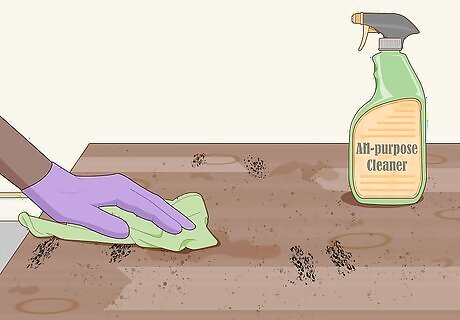
Remove all dirt, grime, and grease with a rag and all-purpose cleaner. You need to thoroughly clean off the piece of furniture you want to refinish, or you will just end up grinding the dirt into the wood when you sand. Use a standard all-purpose cleaner and a wet rag to wipe down all the wood as if you were cleaning a countertop. If the furniture isn’t very dirty, then a wipe-down with a damp rag should work fine. You will be creating a mess as you refinish the furniture, so make sure to work in an easy-to-clean area, or put down drop sheets to catch dust and spills.
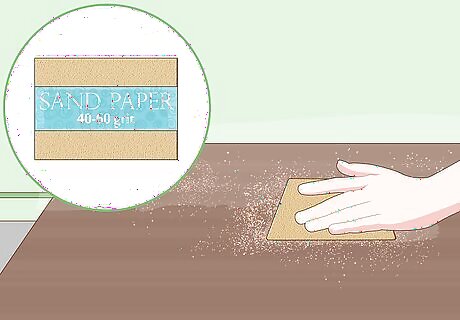
Sand off the finish with coarse sandpaper. Use a sanding block or electric sander with coarse grit sandpaper, such as 40- or 60-grit sandpaper. Sand with the grain until you remove all the existing finish; whether it’s paint, varnish, or anything else. Sand until you expose all the bare wood. Make sure to check on your sanding paper as you go. Replace it with a fresh sheet when it gets worn down. Don’t forget to wear safety equipment, like a face mask and goggles, to keep dust from getting in your mouth, nose, and eyes.
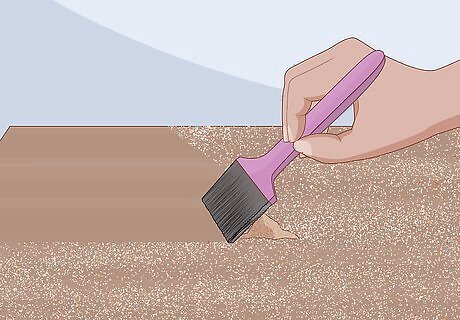
Wipe away the dust when you are done sanding off the finish. Use a cleaning brush or tack cloth to clean away all the dust from sanding. Look for any spots you missed during sanding and go back over them. A tack cloth is a special kind of cloth used to clean up dust in woodworking. You can find them online, at a home improvement center, or at a woodworking supply shop.
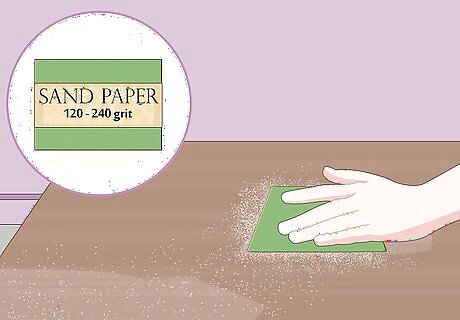
Sand the wood with fine-grit sandpaper to create a smooth surface. Switch to finer grit sandpaper, such as 120- or 240-grit, on your sanding block or electric sander. Sand with the grain over the whole piece again until it has an even, smooth finish. Run your hand over the whole piece when you think you are done sanding to feel for any rough spots, then go back over them until they match the rest of the surface.
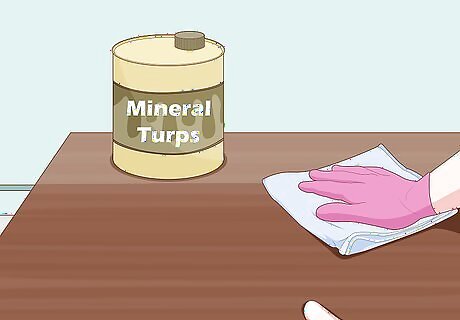
Wipe the furniture down with mineral turps to remove fine dust and residue. Brush off the loose dust with your tack cloth or brush, then wet a rag with mineral turps and wipe down the whole piece of furniture. Make sure to wear your face mask when you apply turps to avoid breathing in the fumes. Mineral turps will soak into the wood and temporarily look like a natural finish, which can help you decide if you want to leave the color natural or change it.
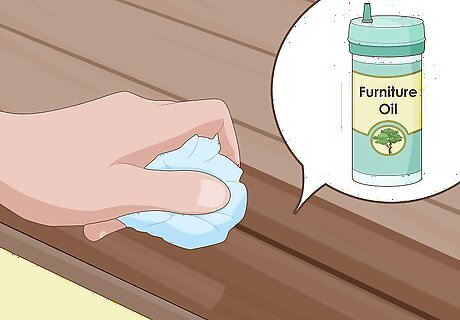
Apply furniture oil if you want a natural-looking wood finish. Pour furniture oil, like teak oil or tung oil, onto a clean cloth. Rub it into the wood, going with the grain, and leave the furniture to dry overnight. Furniture oil soaks into the wood to protect it, as well as bring out the natural colors of the wood. It can be applied as often as you want to keep the finish looking like new. Make sure to work on top of a plastic sheet, tarp, or in an area where spills don’t matter.
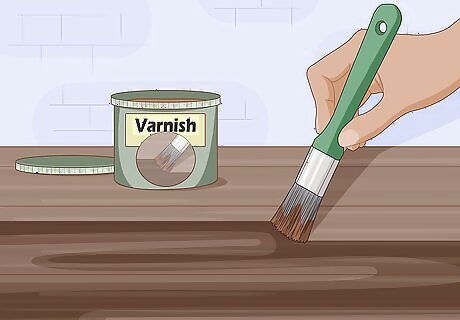
Stain or varnish the furniture if you don’t like the natural wood color. Apply the first coat of stain or varnish with a paint brush. Apply it going with the grain of the wood in smooth, long strokes. Let it dry completely, then lightly sand it with your fine-grit sandpaper. Apply a second coat of stain or varnish and let it dry to complete your refinishing project. If you want to go for a lighter or darker finish, you can either stop after the first coat or repeat the process for a third coat.




















Comments
0 comment